
For people who love sunny weather, Mongolia, known as the "Land of Blue Skies," is definitely a good place to visit. There are about 250 sunny days throughout each year in the country, although the weather is quite cold in the winter, and the temperature can drop down to minus 30 degrees Celsius in some areas.
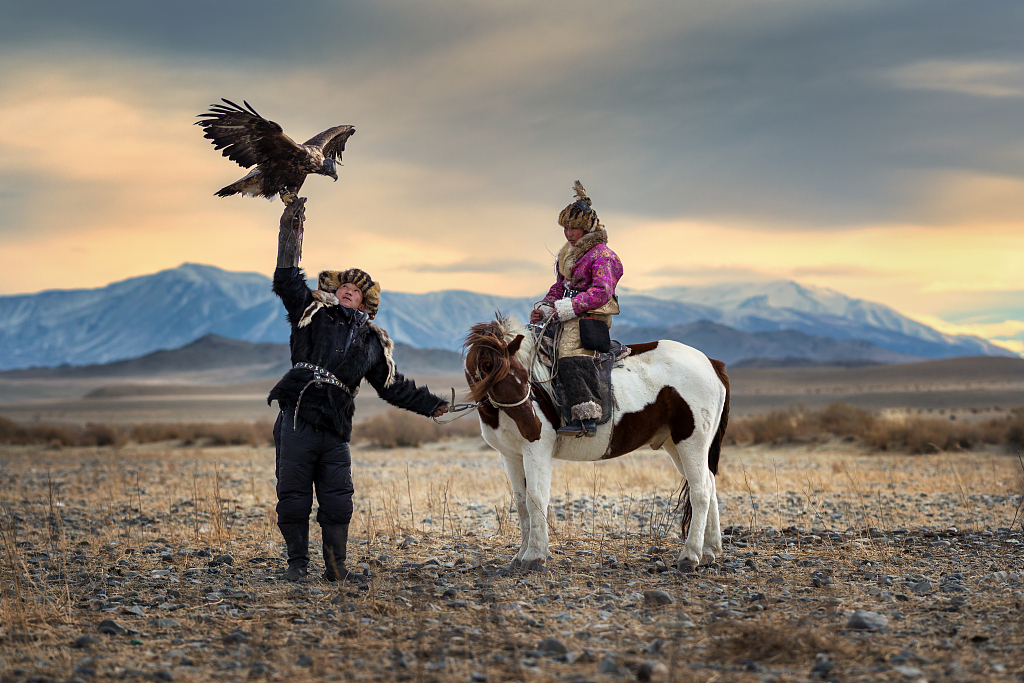
These Kazakh eagle hunters, who live in Mongolia today, are the last ones on earth who still deserve the title "Eagle Hunter." It is not merely a title to them, but a way of life. /VCG Photo
In general, Mongolia is without a doubt an adventurous destination for travelers. Its nomadic culture is famous and the Naadam festival, a combination of arts and three sports including the wrestling, horse-racing and archery, is the most celebrated among the nomads in the country. The Golden Eagle Festival, a UNESCO World Heritage Cultural Event, is the largest gathering of eagle hunters and their eagles in the world.
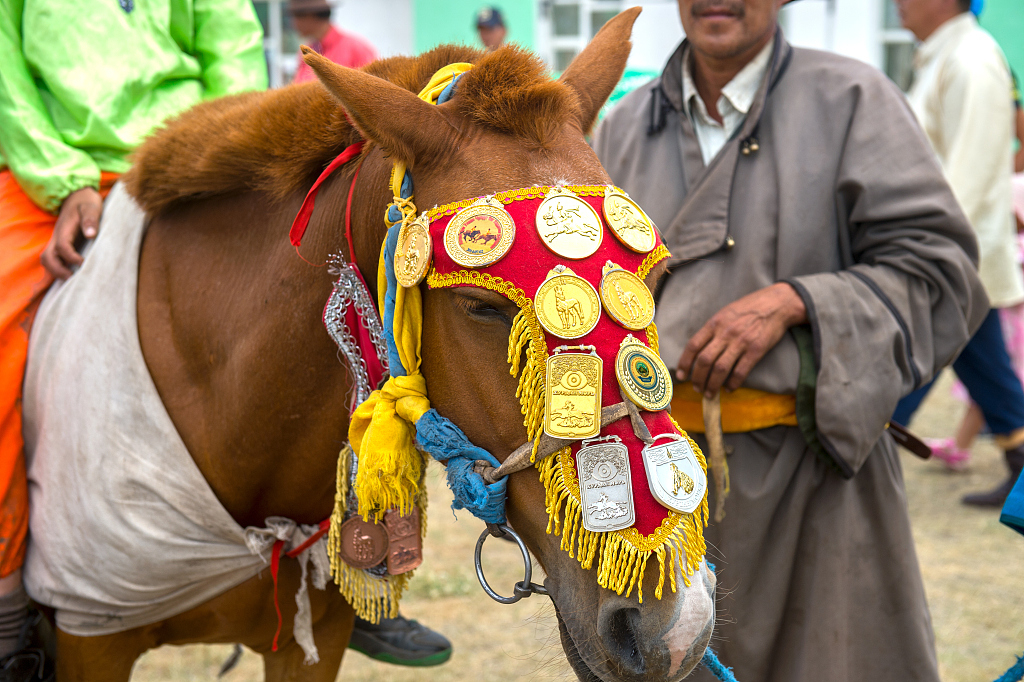
A decorated horse at Naadam festival, Mongolia. /VCG Photo
Besides its rich history and traditions, Mongolia is also a country with natural wonders. It has some of the lowest population density among all the countries in the world, meaning a lot of it is completely empty. The Gobi desert, which occupies much of southern Mongolia, is rugged and wild. The Mongolian steppe, which covers almost the entire far-eastern Mongolia, is home to many distinctive flora and fauna.
In this article, we introduce three popular plants in the "Land of Blue Skies."
Scabiosa Butterfly Blue
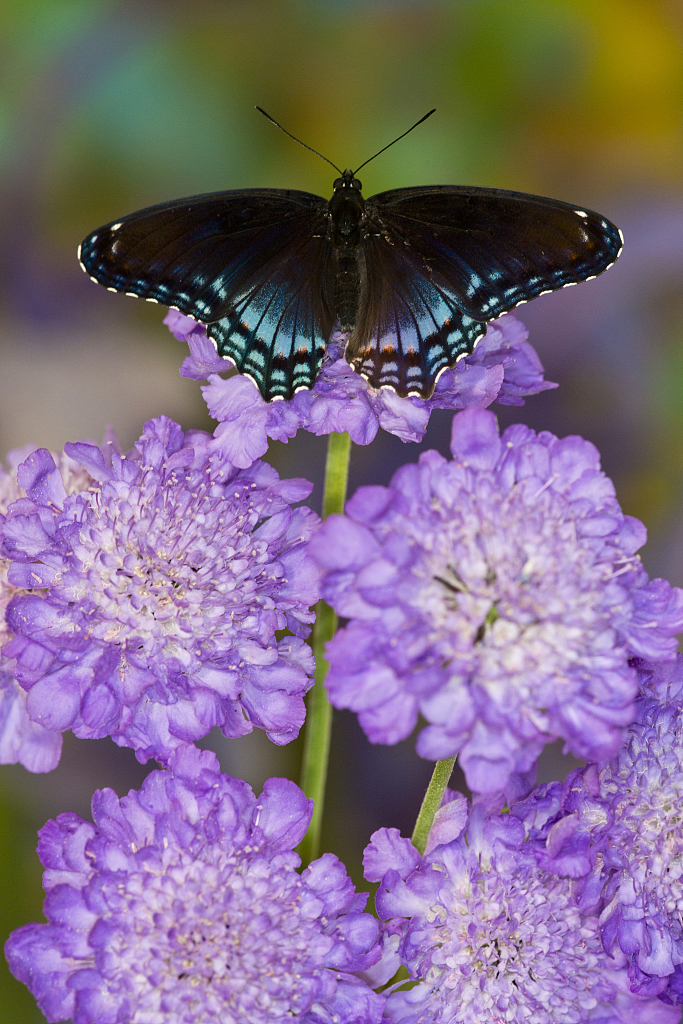
Scabiosa Butterfly Blue is the National Flower of Mongolia. /VCG Photo
On October 25, 2014, the Scabiosa Butterfly Blue was named as the national flower of Mongolia. The beautiful flower is very popular in Mongolia and can be found in my parts of the country. It also looks like the silver decoration plates on traditional Mongolia horse saddles.
The eye-catching flower is easy-to-grow and thrives in the sun. It blooms for months from spring to frost. Butterflies are its frequent visitors.
Saxaul
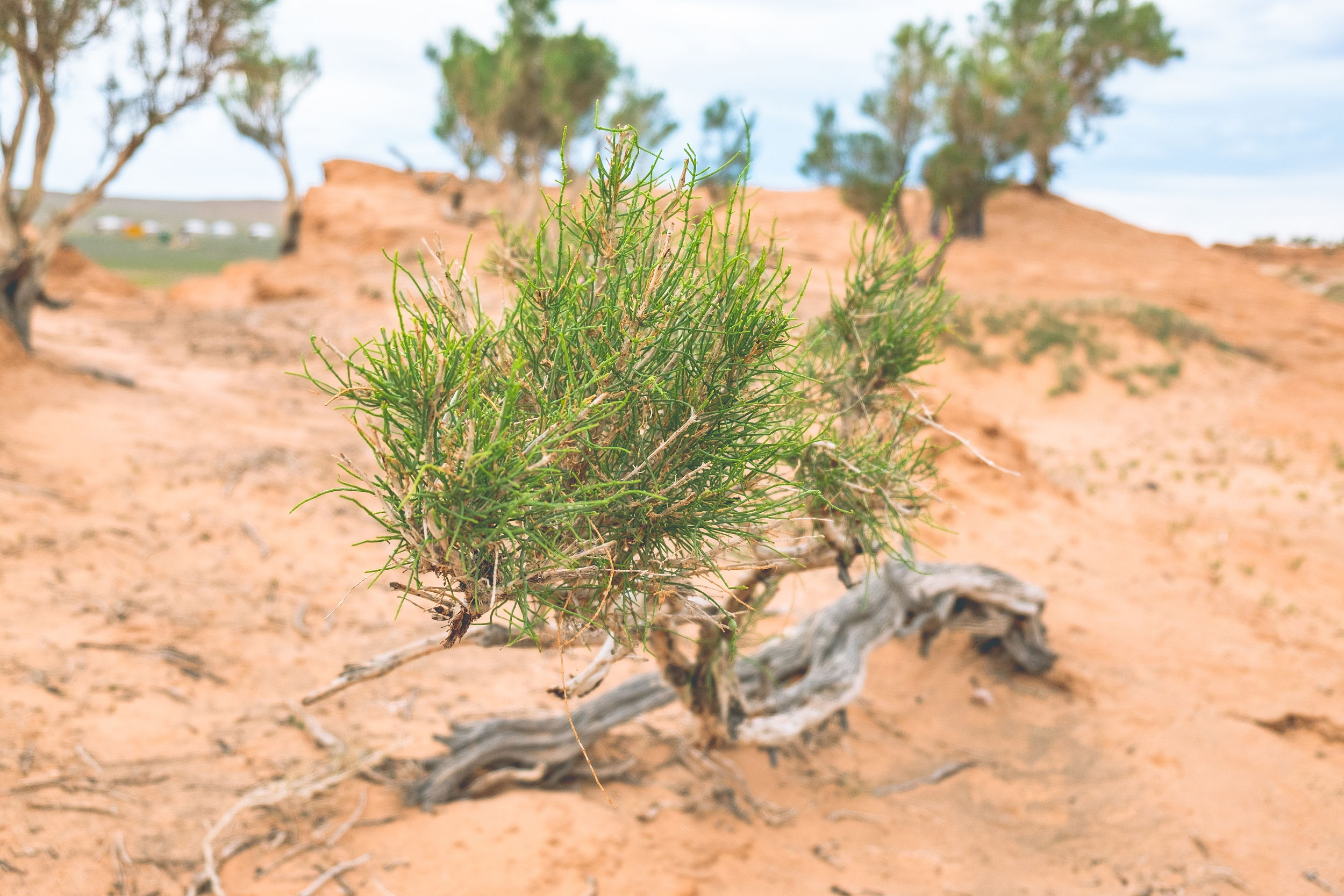
Saxaul is often used in establishment of shelter-belts against desertification. / VCG Photo
The Saxaul is highly drought-resistant, so sometimes it's the only kind of tree that is found in the Gobi desert. The barks of the saxaul trees store water; if you press them, they will leak. The tree is very important to the nomads. It conserves water and can be used for heating and cooking.
The leaves of the saxaul are small, so that the tree can store more water. In addition, the tree is often used in establishment of shelter-belts against desertification.
Caryopteris
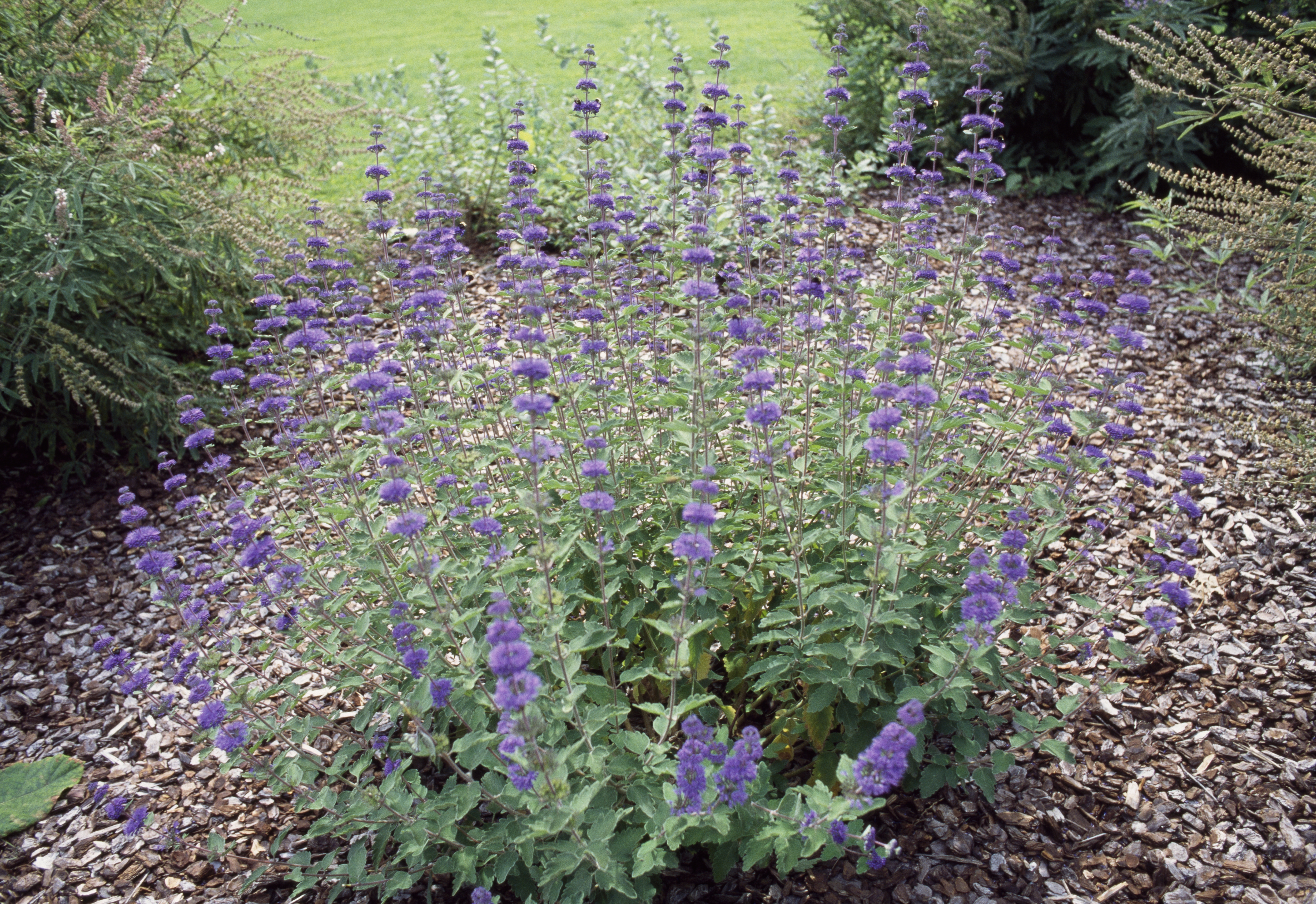
Caryopteris is also called blue beard. /VCG Photo
The Caryopteris is one of the most commonly found flowering plants in Mongolia. People also call it Blue Mist because some of its flowers are blue. Its leaves are aromatic so it is often used to make perfumes.
The perennial likes full sun and well-drained soil. You often find them in water-conserving landscapes.
About 'Plants & Nations'
"Plants & Nations" is a series of articles and pictures about common plants in the world. It serves as a guide to beautiful plants from different countries.
For more articles of the series, you can check:
(Top image via VCG)
(If you want to contribute and have specific expertise, please contact us at nature@cgtn.com)

Copyright © 2018 CGTN. Beijing ICP prepared NO.16065310-3
Copyright © 2018 CGTN. Beijing ICP prepared NO.16065310-3